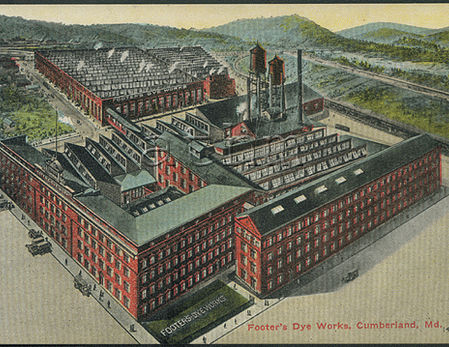FOOTER BUILDING
America’s Greatest
Thomas Footer was an immigrant from England who received American citizenship in 1869. In 1870, he established “Footer’s Steam and Dye Works” in Cumberland, MD. By 1878, Footer was one of the two “dyers” in the city, which had become a city of 14,000 people. Initially the business was located on North Liberty Street, however, by 1904, after several expansions, Thomas and his son Harry Footer had outgrown Liberty Street.
On March 1, 1906, the local newspaper Cumberland Times, announced that Footer’s Dye Works intended to build a new building on S. Mechanic Street and move there from their N. Liberty Street location. With the bulk of the complex built in 1906, and an additional “wet dye house” contructed on land to the south in 1910, the block was filled with brick factory buildings housing “America’s Greatest Cleaning and Dyeing Works.”
Thomas Footer passed away in 1923, but his two sons continued the company. Throughout the 1920’s, Footer’s Dye Works continued as one of the dominant cleaning and dyeing establishments in the region. At its peak, Footer’s Dye Works employed as many as 500 people and numbered the White House among its clients.
The 1930’s, however, brought hard times to Footer’s. The new “dry” cleaning process was beginning to take hold, replacing the steam cleaning process used in the factory. With the Great Depression in full swing, pressure from dry cleaning competition, and a devastating Potomac River flood that same year, Footer’s Dye Works filed for bankruptcy on June 12, 1936.
The building was sold the following December to the Federal Reserve Bank of Richmond and cleaning and dyeing operations closed.
The Footer Building is listed in the National Registry of Historic Places. Click here to read more.


